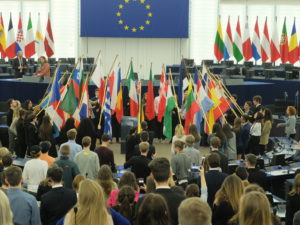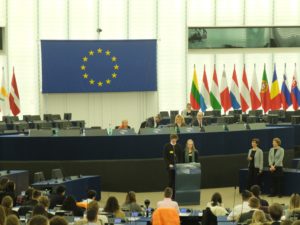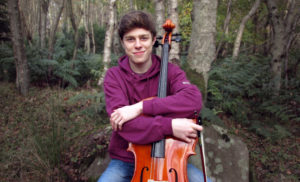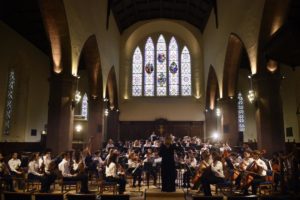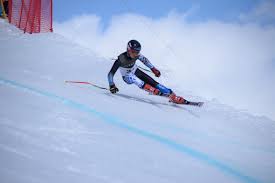Pupils from Meldrum Academy are making the news for real on 15 March 2018 as they take part in BBC News School Report. We aim to publish the news continuously throughout News Day, so please save this page as a favourite and return to it later.
 Upcoming Articles from our roving reporters:
Upcoming Articles from our roving reporters:
‘What really lies behind unopened Snaps’ by Hannah
‘Being a teen in 2018’ by Jasmin
‘Women’s Suffrage Turns 100’ by Beth
‘#respect’ by Avery
‘Euroscola – Experience of a Lifetime’ by Cliona
What Really Lies Beneath Unopened Snaps
by Hannah
Social media is defined as websites and applications that enable their users to create and share content or to participate in social networking; dedicated platforms to interact with other users. Today’s society and admittedly, my own generation have proven themselves worthy of pushing the boundaries of creating, sharing and interacting to the very limits.
When we think about young people and the use of Snapchat and Instagram, our minds immediately conjure images of cyber-bullying and the rise of sexting. The reality of social media is that although no one talks about the benefits, they do exist. However, when running up against threats like child pornography and grooming, they can be hard to enjoy.
Perhaps the most dangerous and underrepresented threat to social media users is other users. This threat particularly lies in the hands of teenagers and, regrettably, young girls. At a time where campaigns like TimesUp and ThisGirlCan are taking over headlines; instead of embracing things as simple as different body shapes and sizes, women and girls are broken down by one another and convinced that there is one perfect cookie-cutter woman.
It has always puzzled me as to why women are categorised and categorise themselves. Larger women can only be inspired by plus sized models and smaller women have to be drawn to models like Cara Delevingne. But this kind of body shaming and scrutiny does have a trickle down effect. I have seen its effect in my friends; forcing eating disorders onto otherwise healthy young girls; making children barely over the age of eleven want to cover their bodies in fear of getting comments on their size.
Unfortunately, while this also continues offline, the inclusion of social media only makes it easier for people to voice their thoughts and harder for those vulnerable young people to escape it. Now, the obvious solution would be to turn the phone, tablet, or computer off. Cut off any indirect connection. But in today’s ‘smartphone society’, there is pressure, an expectation even, that young people have social media.
Lots of this can come from friendship groups- and I speak from personal experience when I say, this is the worst kind of pressure. I cannot decide if it is only women and girls who experience this pressure but my assumption is that the male population is plagued just the same. I think that in the minds of insecure young girls more than boys, there is a need to make other girls like them. A Huffington Post article stated that the number one reason why women fight each other is insecurity. The same insecurity caused by body shaming, caused by peer pressure and inevitably caused by social media. So goes the horrible circle of women hurting other women.
The latest phenomenon on social media sites has been sexting and the sending of nude photos. Although a sensitive subject, I think it is vital to make people aware of it. It is my opinion that many parents and teachers would be astonished if they were to discover exactly what happens behind locked phones. The most worrying thing to me is that as pupils in Scottish education, we are privy to discussions with local police officers about these very issues. Twice a year, we are told of the various prison sentences and knock-on affects these photos and messages can have. So why does it still happen? Even local MSPs are noticing the spikes in these situations. The MSP for Aberdeenshire- East Gillian Martin even announced her own intentions to help tackle the ‘endemic’ as she put it. In an article for the Press and Journal, she advised:
“People who have teenagers walk a fine line between giving them freedom and trust to find their own path and keeping a watchful eye to protect them.”
I am not trying to scare anyone from using social media. There are many wonderful areas of the Internet that can foster friendships, bring families together and share creativity. However, the risks of social media and the internet are real and teenagers are not facing them. Regardless of endless bouts of frightening information that are thrown at us, it simply doesn’t sink in for some people. On the whole, the advice for using social media is simple: don’t take photos of yourself without clothes on; don’t send them to anyone else; don’t think that just because you are behind a screen the things you say won’t hurt people and please, don’t talk to people you don’t know.
Hannah
Being a teen in 2018
by Jasmin
Being a teen in 2018, well where to start…
So much has changed over the past few years, from 16 year olds gaining the vote in parliamentary elections, to the legalisation of same sex marriage in the UK and a significant increase in the amount of youth groups in Scotland. I personally think the best thing about being a young person is the major advance in technology, wouldn’t you agree? Technology is not only is fun and exciting but it improves young people’s learning and makes education more interactive. Also, the number of things we have access to nowadays through technology is amazing. We know about events that are happening more than 10,000 miles away; we can communicate with people on the other side of the world within a few seconds.
There are so many more opportunities for young Scottish people in 2018. One of these is the Scottish Youth Parliament. There has also been an increase in the number of employment opportunities, but the list doesn’t end there. People are starting to see a difference in the acceptance into society of the LGBTQ+ community and for all races, disabled people and different cultures or religions. People have moved on from the “good old days” (as many grandparents would say) where any form of change was frowned upon. We now realise that everyone is equal no matter who they are.
Also, as a young woman in 2018 I am seeing massive improvements being made for me and all the other women out there. With things such as International Women’s day becoming more globally recognised and also issues such as equal pay between men and women, the Me Too movement and the encouragement from society for women to stand up for their rights and make sure their voices are heard. However, the lives of women is not the only thing that has improved with our generation, but also the lives of men. Both genders can confidently say they notice a difference in being able to speak out more about their mental health, feelings and erasing gender stereotypes.
I believe that being a teen in 2018 is not just about having the newest iPhone or owning the new Nike Air Max’s; it’s about making a difference in your local community, knowing how lucky we are to live the lives that we live and also about standing up for what we believe is right because, despite being slightly smaller than adults, we still have big voices.
Jasmin
Women’s Suffrage Turns 100
by Beth
2018 marks the 100th year since women in Britain finally won the right to vote, after enduring around another 100 years previously, of tireless protesting. The film ‘Suffragette’, released in 2015 tells the story of famous suffragettes in London, and the struggles and sacrifices they faced in the heat of women’s suffrage in 1912.
For now, and within the past 100 years after victory, a celebration of the growing voice and strength of women in politics, government and simply in the home has been blaring, only to get louder still.
However, it seems that many young women in the Aberdeen and Shire area still know very little about women here who, one hundred years ago, relentlessly fought for the rights that we may take for granted today.
The original Lady Aberdeen, Ishbel Hamilton-Gordon, was the head of the ‘Women’s Liberal Federation’, which fought for women’s suffrage, and in 1883 she was made the first president of the Ladies Union of Aberdeen, which was a group that concentrated on the health and well-being of young women who lived in cities. The Lord and Lady also financed a local hospital and school, as it is said that Ishbel felt strongly about proper healthcare in life. Ishbel and her husband Lord Aberdeen, John Hamilton-Gordon, lived in Haddo House, which the Gordon family have inhabited for over 500 hundred years.
As with the Liberal Lord Aberdeen being a member of the House of Lords, Lady Aberdeen soon developed her own sense of political activism. Ishbel held a Household Club at her home at Haddo, organising lessons for advancing female servants’ skills in several activities such as reading, carving and even singing. It was rumoured at the time that the Lord and Lady often attended their servants’ social events in the evenings and sometimes even sat down to eat alongside them, which was simply unheard of in these days. This indicates that Ishbel and her husband believed in equality, not only between the sexes but classes too, which was a mindset far ahead of their time to say the least.
As many working-class men also did not have the vote at this time, women’s suffrage was largely fought for by middle-class women. Another notable suffragette from Aberdeen was Dr Mary Esslemont, who was born in Aberdeen and studied medicine at the University of Aberdeen. She died in 1984 at the age of 93. Her mother was President of the previously mentioned Women’s Liberal Federation, her name was Clementina Macdonald. Studying at Aberdeen University, Mary became the first female President of the Student’s Representative Council and was the first woman to sit in the University Court between the years of 1947-1974.
It was small scale acts and achievements like these that promoted the growing equality between male and females at this time, and even now in modern day. The ability for women to stand alongside men with an equal voice in Westminster, schools and even in family homes reflects a better, open-minded, more accepting society that we should, as young women, think ourselves lucky to live in.
Euroscola – experience of a lifetime
by Cliona
“Euroscola offers an immersive experience in the Chamber of the European Parliament in Strasbourg, allowing high-school students to learn about European integration by experiencing it firsthand. Students from the 28 EU Member States are selected to become Members of the European Parliament for one day. They take the floor in plenary and committee sessions to debate and vote on resolutions on current affairs, all the while practicing their language skills and making friends with fellow students from across Europe.”
In order to be considered to take part in the experience, I had to write a short essay on a European theme that interested me as well as be interviewed by two members of Oldmeldrum Rotary. I was lucky enough to be chosen as one of the 26 students who represented Scotland at Euroscola this year.
The trip lasted just under a week, from Monday 12th February until Friday 16th February. During this time, we visited various places of interest in and around Strasbourg, including the grand cathedral, the Palais de Justice (a court house) and the Council of Europe. We also crossed the border into Germany and visited the older section of Strasbourg known as ‘La Petite France,’ which was home to beautiful traditional German-influenced architecture. Throughout the week, we were given various group tasks to perform in order to improve our French speaking abilities, levels of confidence and teamworking skills. For example, we had to carry out a survey in the streets of Strasbourg, asking people about their beliefs and opinions about Scotland and Europe. There were some very funny answers – a few people even said that they though Scotland was between Wales and England! We also had to create and film a documentary of Strasbourg in teams using iPads. It was great fun exploring the city on our own and experiencing the French-German culture first-hand.
The Euroscola Parliament day occurred on the Thursday. Myself and another boy were asked to present the UK (in French!) to the audience of the hemicycle, which was comprised of approximately 450 students, plus their teachers as well as the MEP officials. After we had introduced ourselves, there was an opportunity to ask an MEP (Member of the European Parliament) questions about Europe, everything from the environment and renewable energy to immigration and integration to Brexit and its impact on Europe.
After lunch, it was time for the group discussions. We split up into groups of around 100 students to debate individual topics including the environment, immigration and integration, the future of Europe and youth employment. I was discussing the issue of the environment: how we could raise more awareness, ways to promote sustainable growth in developing countries, the positive and negative impacts of investing in renewable energy…it was extremely interesting to hear other countries’ opinions and ideas with regards to saving the planet, especially those who had come from the more underdeveloped Eastern countries, where recycling is an entirely foreign concept!
At the end of the day, back in the main hemicycle, we all stood to hear the European anthem play in a moment of united strength and solidarity as part of the European Union.
I can safely say that Euroscola has been an experience of a lifetime. I made so many new friends, met some amazing people and had my eyes opened to new and diverse cultures from all over Europe. I had the opportunity to enhance my knowledge and understanding of the French language and the opportunity to improve my self-confidence and ability to collaborate with others.
I would recommend a visit to the city of Strasbourg to anyone and everyone – personally, I can’t wait to go back!
Cliona presents to the chamber in Strasbourg’s European Parliament
Meldrum Academy’s Addition to the Long List of Famous Williams
by Hannah
From John to Robin; Pharrell to Tennessee, Meldrum Academy’s own Ruaraidh Williams joins a long line of successful musicians.
I know nothing about music. I have no musical inclination or natural rhythm and I’m pretty sure I’m tone-deaf, so talking to gifted musician Ruaraidh Williams made me feel less than adequate. Not only is he frustratingly successful in his music, he is encouraging of younger children to pursue the musical path.
Ruaraidh didn’t need any help chasing his musical dreams. He revealed that he has been surrounded by music his whole life. From learning to play the guitar from his grandfather at age 8 to winning the Rotary Young Musician of the Year award in 2017.
Aside from playing the cello and continuing with the guitar, Ruaraidh plans to expand his musical repertoire to electric and bass guitars, piano and even dabbling in a little singing from time to time. He told me that for him, music was his way of expressing himself, finding that when performing, he was able to communicate with people without talking.
He also mentioned that through the orchestra performances and competitions he takes part in, he has fully embraced the social side of the music scene. He has made friendships and built relationships with people all over Scotland and been able to connect with other young people, simply by playing the cello.
It was clear to me throughout our interview that not only does Ruaraidh care about his own musical career, which he hopes to broaden into composing and eventually the Royal Conservatoire of Scotland; but also the futures of budding young musicians who haven’t realised their potential just yet. He told me that he truly believes in learning music at a younger age, as it opens up the possibilities for progression and achievements out with school life.
So go and learn how to play an instrument. Go now because, as Ruaraidh put it,
‘The best thing about music is that those primary school recorder lessons can turn into an incredible career.’
British Under 14s Super-G Champion, Jonathan Marshall on why skiing is “everything”
By Jasmin
Been watching the Winter Olympics this year and wondering who Britain’s next skiing champion may be? Well, look no further than this article.
Scottish skier Jonathan Marshall offered to have a personal interview with me about his skiing career and it looks as though he has hungry eyes for that gold medal.
Unfortunately, my understanding of skiing only goes as far as watching the Eddie The Eagle movie, so I was more than impressed when Jonathan used his knowledgeable charm in such a way that I felt as though I could give Clare Balding a run for her money after we’d completed our interview.
Jonathan spoke to me about his time in America as a child and how his love for skiing began at just the spritely young age of 2 years old when he could barely recite his ABC’s. He began skiing in Colorado despite living in Texas which would’ve made more sense for him to do so until he explained that the ski slopes in Colorado are better than those in his home state. Jonathan soon came to realise that his one true passion in life was skiing and that he wanted to pursue it further, even after moving away from his beloved slopes in America and instead to the mediocre ones here in sunny Scotland.
Jonathan has since gone on to win many awards through his skiing, so much so that as he began listing them I couldn’t help but feel I was not worthy of being in the presence of a man of such high achievements. He explained that his most proud moment was being crowned the British under 14’s Super-G champion. I admitted to him that I had absolutely no idea what this was and, with a calming sigh, he explained that it’s a discipline in alpine skiing, In language that I finally understood, he said, “You go downhill fast and go around a couple of gates”.
I ended the interview with one final burning question, what skiing meant to him. After some thought, his face quickly turned into a bright, warming smile. He simply answered, “Everything. Without it, my life would be meaningless”.
If there is one thing I can gather from my interview with Jonathan, it is that if he is as skilled as he is passionate, there is no doubt in my mind that Britain is looking at its next Winter Olympic Skiing gold medallist.
#Respect
Avery
Before the onslaught of the Beast from the East, I was asked by my Pastoral Care teacher to give an assembly on internet safety. I shuddered. How many times must we be given the same droning lecture about Snapchat, sharing photos, destroying lives and obliterating job prospects?
I did my best to ensure that this assembly was different, perhaps funny, but there are only so many ways to spice up a speech that we, as academy students, have all heard hundreds of times. I was directed to a NSPCC video aptly titled ‘I saw your willy’, which was an animated feature about a boy named Alex who sent a photo of his ‘bits’ to a girl, and then she sent it to her friends, and they sent it to theirs and so on and so forth. This video made me wonder what the biggest issue really is with internet safety regarding young people.
The Centre for Innovative Public Health Research (CiPHR) conducted a survey on ‘sexting’, gathering data on how many young people are sending sexual photos or messages online. For how much we focus on this awkward topic in school, I was very shocked to see a measly 7% emblazoned on my screen. Of course this percentage is based on the word of the teens who were willing to admit to any form of sexting, and it’s hard to determine whether or not this is reliable.
Allow me to introduce the real issue: cyberbullying. By definition, this breed of bullying entails sending threats and intimidating messages using technology and social media. According to research by the i-SAFE foundation, over half of teens have experienced online bullying, and roughly the same amount admit to typing out these abusive messages themselves. This makes cyberbullying the most common type of bullying in our modern society.
Sexting and cyberbullying can be obviously linked, with the potential for images or messages to be shared online. However, if young people growing up in this digital era were taught more about respecting themselves and others online, the issues linked with both online harassment and the odd nude sent on Snapchat would be much less significant.
The UK is running out of blood… literally.
By Hannah
Blood donation banks across the UK have reported stocks of O-, A-, B- and O+ blood types falling behind the recommended shelf-life of 6 days.
The NHS have said that over the periods of bad weather the UK has experienced since February, blood donations have struggled to meet the amount needed. So far, it looks like B- in particular is in serious risk of expiring without being restocked. The biggest issue for most potential donors is the lack of nearby centres particularly in the central belt of Scotland and larger cities in England and Wales. Despite organisations’ and volunteers’ efforts to set up more localised donation points, the numbers still don’t add up. The BBC even reported a 20% decrease in young donors as they are ‘too busy’. One staggering statistic from the article is that of the portion of young people who couldn’t fit giving blood into their schedules, around 75% agreed that anyone who is eligible to give blood should do so. The advice from the NHS, volunteers and the government’s health cabinet is to give blood whenever and wherever possible. It might not be a pleasant business, not even a comfortable one, but you have the opportunity to save lives at your fingertips. And if that’s not enough, you’ll even get a Hobnob or a Digestive at the end of it.
Aberdeen FC Has its Eyes on the Prize
By Jasmin
On Tuesday night the goalkeeper for Aberdeen FC, Freddie Woodman, put on a heroic front at the Aberdeen v Kilmarnock game as the team saw themselves thrown into penalty shootouts. The match had originally come to a frustrating close at the end of the 90 minute game with a draw at 1-1. Not exactly the result that neither the supporters nor the club itself wanted to see. However, hope was not lost as it was announced there would be a chance for penalty scores. Due to this a miracle was performed as the team managed to walk away from Rugby Park with a 2-3 win, down to the fantastic saving skills from Woodman who turned away 3 penalties.
This win means big things for Aberdeen FC as they will see themselves going forward to the semi-finals to play against Motherwell on the 14th April at Hampden Park. This game is not likely to disappoint as most Aberdeen matches never do. Our wonder keeper Woodman seems to have his mind set on getting his hands on another trophy which would be a great sight for Aberdeen supporters who have waited 4 years for another Scottish Cup win. All good things must have a drawback though as three of our players, Shay Logan, Graeme Shinnie and Kenny McLean will miss out on this year’s semi-finals after being booked during the Kilmarnock game.
This will be the Don’s downfall or victory but either way we can only hope that our team will not let us down and do our city proud. There’s only thing left to say on the matter: “Mon i Dons!”



